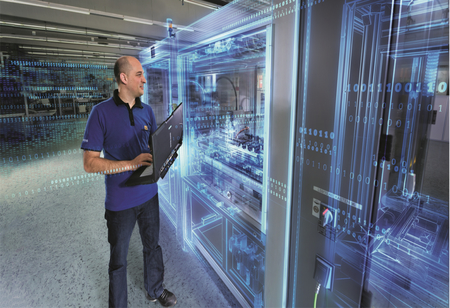In these times of pandemic, various next-gen technologies are gaining the needed traction so as to bring the digital revolution across industry segments. Today’s living styles of people have changed and have been following new models such as work from home (WFH) and remote operations.
The COVID-19 crisis has made many projects and product managers incorporate all the new-age technologies so as to take acceptance testing and product commissioning quickly, digitally. As with the traditional process, validating the hardware and technology meant that one needs to keep factories and infrastructure operational and the installation is done in person with engineers from the supplier and operator.
Hence, by sustaining physical distance to reduce the risk of viral exposure, these virtual approaches have been aiding many teams to robustly maintain project momentum and ensure employees’ safety. Also, it will further help companies to maintain bottom lines by giving the customers the option to log on and watch an acceptance test remotely.
Adding to it, project managers must travel frequently to customer’s factory acceptance tests. Hence, allowing project managers with remote testing to turn travel time into valuable work time.
By leveraging digital technologies, manufacturers and infrastructure operators can improve upon virtual testing methods used during COVID-19, while also gaining the capability to perform remote maintenance and operations moving forward.
There are various numbers of efforts that are being undertaken to boost both the digital transformation of manufacturing and the nation’s economic recovery.
Today, the time is such that everyone needs to be future-ready and also be ready for any kind of loss which will be attributed to the coronavirus. Therefore, it has been the utmost necessity of today’s manufacturers to adopt digital technologies and bring needed automation in their operational segment. By leveraging these technologies infrastructure operators and manufacturers can significantly improve their virtual testing methods. This pandemic has been the perfect time to test remote maintenance and operations.
Here are some of the trends which can focused upon:
Virtual FAT becoming Necessity
If we talk about the U.S., the factory managers in charge of product commissioning had started to realize the physical distancing rules so as to effectively combat coronavirus.
Utilizing a video conferencing platform and also performing FAT virtually with digital cameras, the virtual solution replicates the in-person experience as closely as possible. Earlier if was just a mere theoretical testing option, but now, it has become an utmost necessity for the production to steadily continue during these times.
Digital Twin
The use of a digital twin in product testing has been an option for some time, just like virtual FAT via video.
Throughout its construction and acceptance phases, this technology is likely to play a significant part in improving the process of testing a product and product commissioning. Furthermore, enabling developers to improve and thoroughly test a product before building through high-end 3D simulations. These simulations can also be adjusted with the change in any parameters or the environment in a whole.
Flexing Bottlenecks for Equipment
With a traditional process utilizing man power in acceptance testing, there is a huge chance of lag, hence wasting quite the wholesome amount of time. Increasing the velocity of throughput so as to deliver information to customers hastily, manufacturers can send product data 24 to 48 hours after producing each unit with virtual FAT, thus aiding in highlighting functionality to the customer.
 Magazine
Magazine
